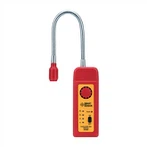Methods and tips for measuring power supply ripple with an oscilloscope
Q1: During high-speed serial testing, what are the requirements for the oscilloscope required for testing? Which indicators are the most critical?
A: Basically, the bandwidth and sampling rate must meet the requirements of the serial signal. Next, you need to examine whether it is a differential signal and the oscilloscope's analysis function for serial testing, such as pattern triggering and decoding.
Q2: When measuring high-speed digital signals, does the bandwidth of the oscilloscope have to be more than 5 times the signal frequency? Why?
A: Select the bandwidth of the oscilloscope, which is generally 2.5 times the rate of the signal being measured or 5 times the highest frequency of the signal, so that the fifth harmonic of the high-speed signal can be seen.
Q3: How does the bandwidth during testing affect the test results? What are the bandwidth requirements for the test instrument?
A: First of all, insufficient bandwidth will lose the high-frequency harmonic components of the signal, resulting in inaccurate time and amplitude measurements. However, even though oscilloscopes with the same bandwidth will exhibit different rise times, it is critical for the application to measure the error that occurs on the rising edge. In addition, in the data signal, the opening of the eye diagram is also greatly affected. Because of this, rise time specifications are very important for devices that perform measurements in the time domain (oscilloscopes).
Q4: Is the higher the bandwidth, the better?
A: As mentioned earlier, the rise time of currently widely used circuit boards, connectors, cables and integrated modules is very limited, so that high-frequency components are seriously lost after high-speed signals are transmitted. Many new third-generation standards (USB3.0, PCIE Gen3, 10G-KR) have taken this into account and require much lower bandwidth than before. Of course, there are some exceptions that require higher bandwidth. For example, the 100G Ethernet solution uses complex modulation technology (DP-QPSK) and requires four analog inputs and a bandwidth of more than 20GHz for analysis. With these applications in mind, Tektronix has announced that its oscilloscopes with bandwidths exceeding 30GHz will be available later this year.
Q5: How can we improve the sensitivity of the test instrument?
A: Choose the appropriate bandwidth. Excessive bandwidth will increase noise. In the vertical setting, try to let the signal fill the screen as much as possible to make full use of the AD digits of the oscilloscope. You can use waveform averaging, appropriate probe bandwidth, and select high resolution. (Hi-res) acquisition mode and so on.
Q6: When debugging the system design, how to confirm abnormal phenomena and clarify the operating conditions of the circuit in a short time, how to increase the chance of catching abnormal phenomena?
A: Using DPX technology and turning on infinite persistence, abnormal signals that may not be visible for hours can be seen in a few seconds. This performance increases the chance of witnessing transient events that occur in digital systems, including short pulses, glitches, and conversion errors.






